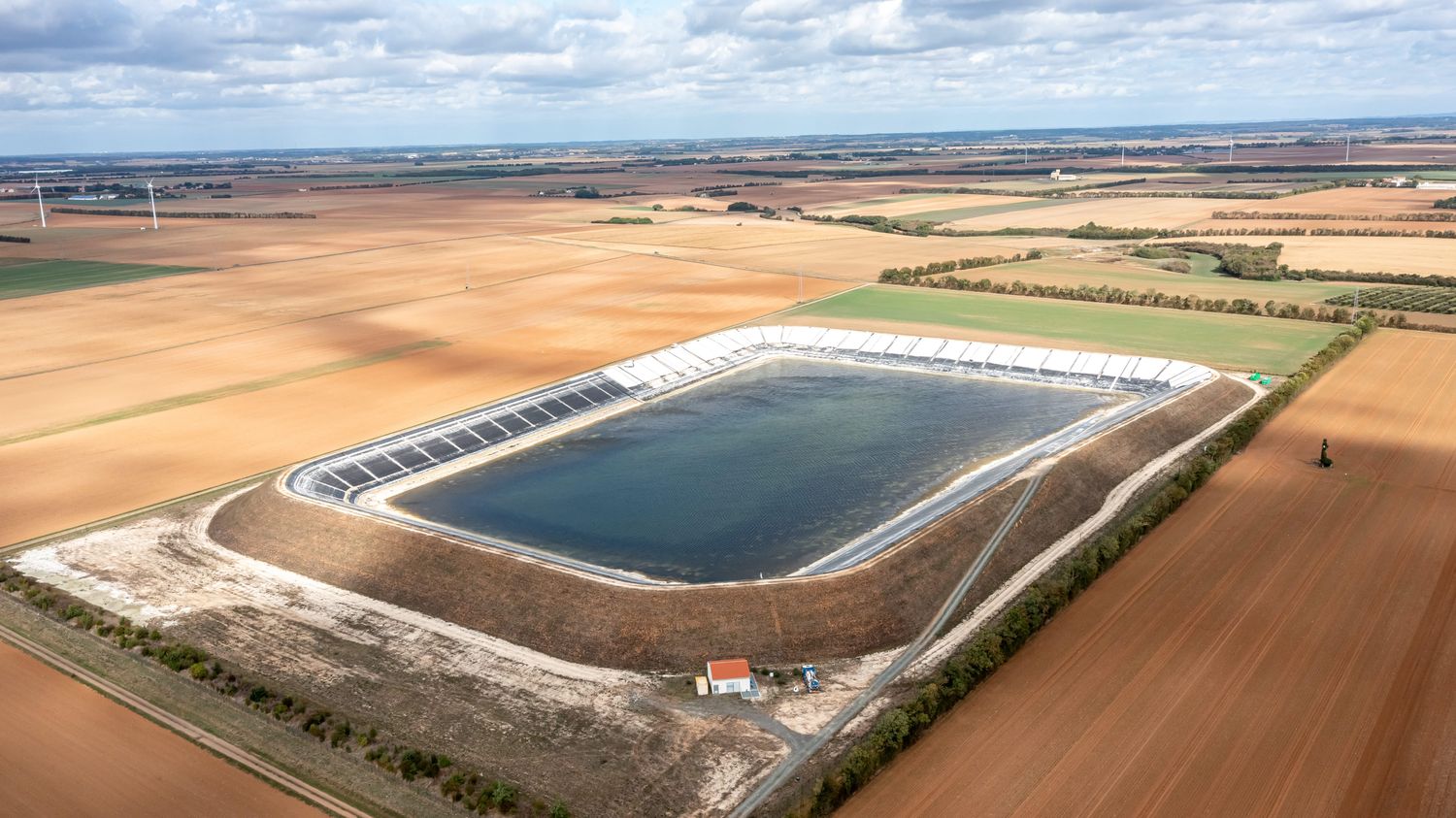The water reserve project for agricultural irrigation in Sainte-Soline (Deux-Sèvres) crystallizes the tensions around the sharing of the resource in the face of the threat of recurrent droughts. Less publicized, other programs are being studied in France.
It is difficult to say precisely how many basin projects exist in France, because there is no national figure for these reserves dedicated to agricultural irrigation. According to the government’s public policy information site, there are about 100 projects. A figure well below the census made by the Bassines non merci and Le Soulèvement de la Terre associations, which count a little less than 300, a large part of which are still under study.
>> “Mega-basins” in Deux-Sèvres: but, by the way, what is a basin?
The official name of these basins or “mega-basins” is “substitution reservoir”. Clearly, it is a kind of huge swimming pool dug in the middle of the fields and which takes water, most of the time from the groundwater, to use it for irrigation in spring and summer. These basins are very localized in France.
Projects around the Poitevin marsh
While there are a few projects around Clermont-Ferrand (Puy-de-Dôme) and around Bourges (Cher), the overwhelming majority of programs are located further west in the country: mainly in Charente-Maritime, in Vendée and in the Deux-Sèvres. It is in this department that Sainte-Soline is located where there were violent clashes on Saturday March 25. Along with Mauzé-sur-le-Mignon, Sainte-Soline is part of a contested project of 16 reservoirs in the Sèvre Niortaise and Mignon basins.
The south of Vendée, on the edge of the Marais poitevin, has 25 basins, built between 2007 and 2011 on the basins of Autizes and the Vendée and Lay rivers. In this inventory, it is also possible to add Vienna. A project for 30 new water reserves in the Clain river basin was validated there by the prefecture at the end of 2022.
According to Vincent Bretagnolle, a CNRS researcher, this massive presence of basins around the Marais poitevin is explained in particular by the existence of granite soil. Water cannot seep into this soil made up of very dense rocks. There is more need for watering. The number of farmers growing maize, a plant that requires a lot of water, may also explain the presence of many projects in these regions.
Numerous appeals under investigation
These bedpan projects are also being challenged in court by their opponents. Some 93 replacement reserves currently planned in the former Poitou-Charentes region are currently subject to appeal. If the examination of the procedures takes time, court decisions have already been rendered in recent weeks. In Charente-Maritime, the Council of State confirmed on February 3 the ban on filling five basins for agricultural use in the municipalities of La Laigne, Cramchaban and La Grève-sur-le-Mignon due to insufficient studies. ‘impact. The Administrative Court of Appeal of Bordeaux also invalidated in January six other projects in six municipalities of Charente-Maritime (Anais, Benon, Le Gué-d’Alleré, Saint-Médard-d’Aunis, Saint-Sauveur-d’Aunis and Saint-Xandre), judging the volumes of water envisaged to be excessive.
